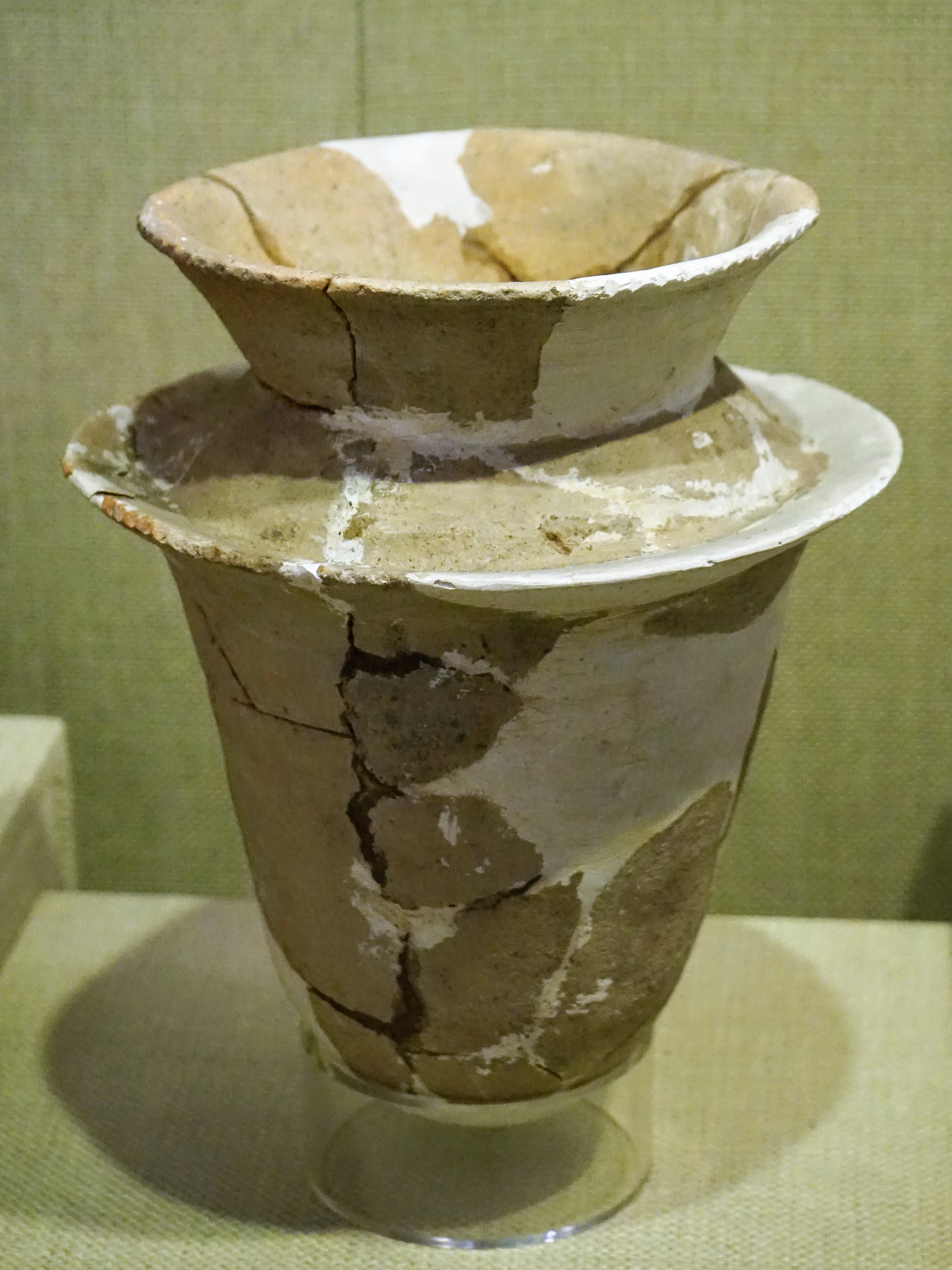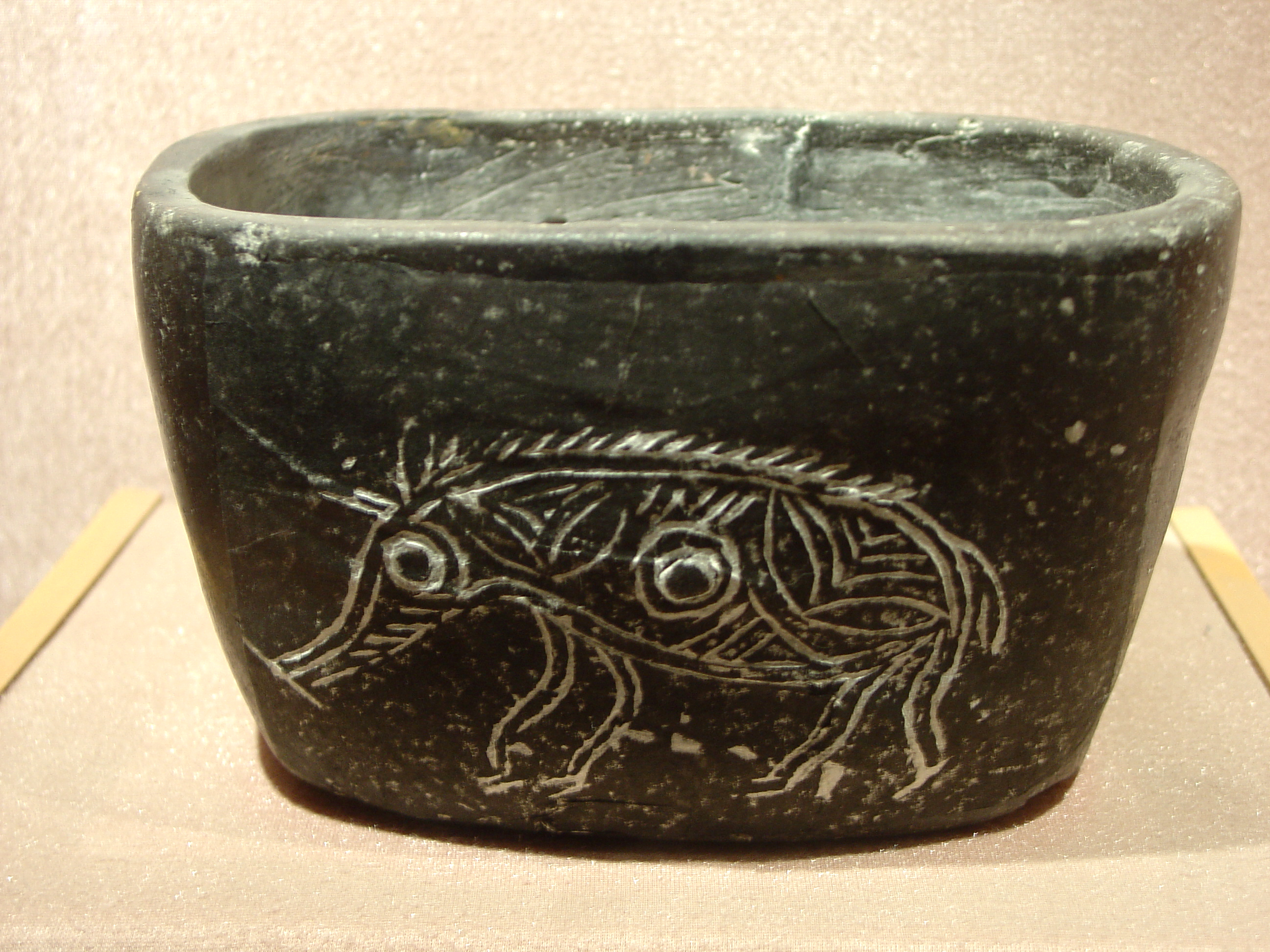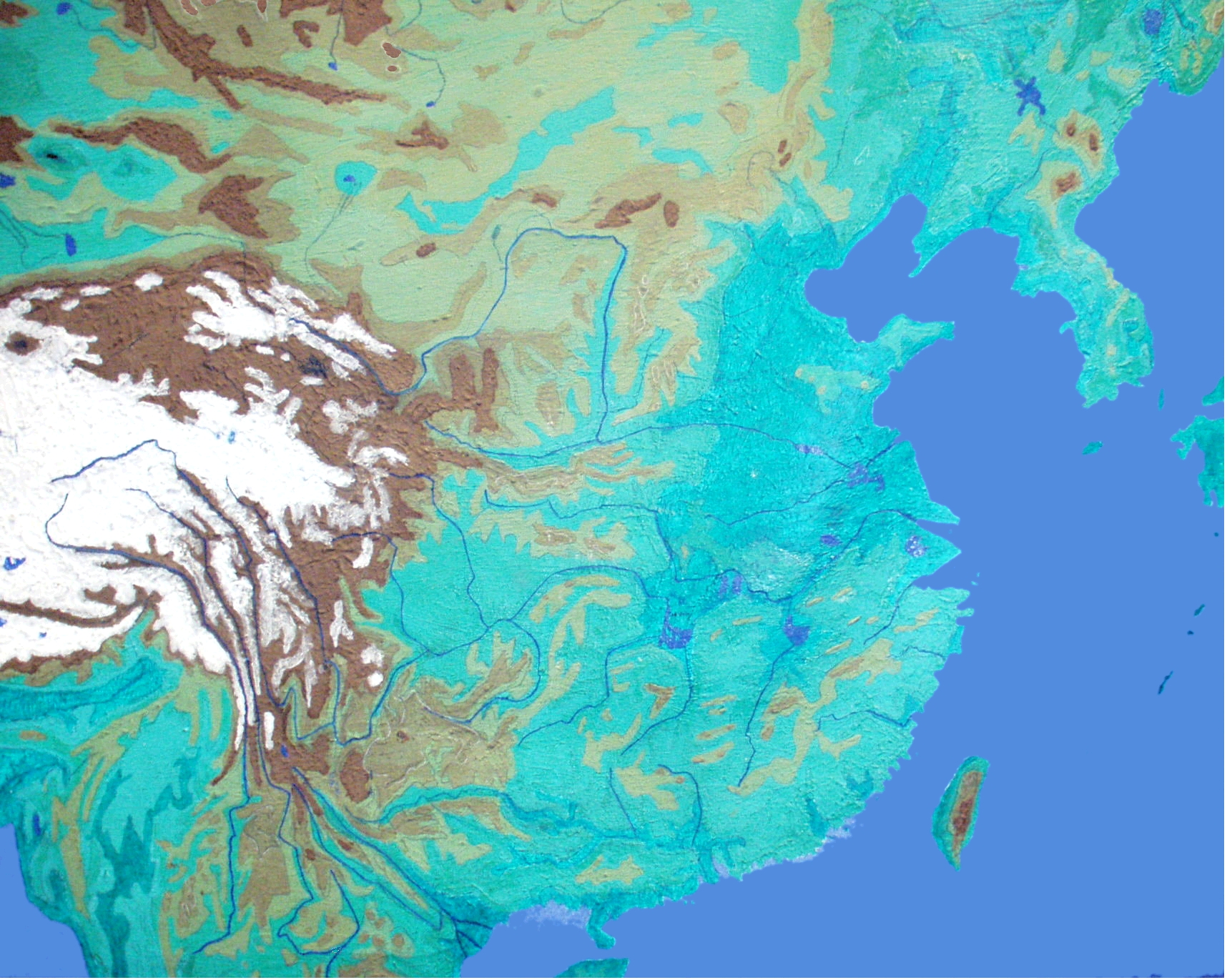|
Majiabang
The Majiabang culture, also named Ma-chia-pang culture, was a Chinese Neolithic culture that existed at the mouth of the Yangtze River, primarily around Lake Tai near Shanghai and north of Hangzhou Bay. The culture spread throughout southern Jiangsu and northern Zhejiang from around 5000 BC to 3300 BC. The later part of the period is now considered a separate cultural phase, referred to as the Songze culture. After that, It was followed by the Liangzhu culture, and co-existed with the Hemudu culture. Based on the discoveries of the archaeological findings, archaeologists had raised the statement that Majiabang culture is the origin of the early fishing, hunting and gathering economy in China, and its agriculture was developed, especially for the farming of rice, people living in this period used this as an economic method of production. Majiabang people cultivated rice. At Caoxieshan and Chuodun, sites of the Majiabang culture, archaeologists excavated paddy fields, indicating th ... [...More Info...] [...Related Items...] OR: [Wikipedia] [Google] [Baidu] |
Songze Culture
The Songze Culture was a Neolithic culture that existed between 3800 and 3300 BCE in the Lake Tai area near Shanghai. Dates Three radiocarbon dates were taken from Songze culture layers at Jiangli near Lake Tai. Two of the dates were obtained from charred rice grains, returning dates of 3360–3090 BCE and 3540–3370 BCE. The third date was taken from knotgrass and produced a date of 3660–3620 BCE. Although it is accepted to be the successor of the Majiabang culture, others have suggested that Songze was a successor phase to the Hemudu culture. Sites Songze In 1957, archaeologists discovered a site north of Songze Village near Zhaoxiang Town in Shanghai's Qingpu District. Excavations have been conducted throughout 1961, 1974–1976, 1987, 1994–1995, and 2004. These revealed three cultural layers: the most recent had pottery from the Spring and Autumn period; the middle layer was a cemetery with 148 graves and numerous artefacts; the oldest layer belonged to a village of the ... [...More Info...] [...Related Items...] OR: [Wikipedia] [Google] [Baidu] |
Hemudu Culture
The Hemudu culture (5500 BC to 3300 BC) was a Neolithic culture that flourished just south of the Hangzhou Bay in Jiangnan in modern Yuyao, Zhejiang, China. The culture may be divided into early and late phases, before and after 4000 BC respectively. The site at Hemudu, 22 km northwest of Ningbo, was discovered in 1973. Hemudu sites were also discovered at Tianluoshan in Yuyao city, and on the islands of Zhoushan. Hemudu are said to have differed physically from inhabitants of the Yellow River sites to the north. Some authors propose that the Hemudu Culture was a source of the pre-Austronesian cultures. Material culture Some scholars assert that the Hemudu culture co-existed with the Majiabang culture as two separate and distinct cultures, with cultural transmissions between the two. Other scholars group Hemudu in with Majiabang subtraditions. Two major floods caused the nearby Yaojiang River to change its course and inundated the soil with salt, forcing the people o ... [...More Info...] [...Related Items...] OR: [Wikipedia] [Google] [Baidu] |
Neolithic China
This is a list of Neolithic cultures of China that have been unearthed by archaeologists. They are sorted in chronological order from earliest to latest and are followed by a schematic visualization of these cultures. It would seem that the definition of Neolithic in China is undergoing changes. The discovery in 2012 of pottery about 20,000 years BC indicates that this measure alone can no longer be used to define the period. It will fall to the more difficult task of determining when cereal domestication started. List Schematic outline These cultures are existed for the period from 8500 to 1500 BC. Neolithic cultures remain unmarked and Bronze Age cultures (from 2000 BC) are marked with *. There are many differences in opinion by dating these cultures, so the dates chosen here are tentative: For this schematic outline of its neolithic cultures China has been divided into the following nine parts: #Northeast China: Inner Mongolia, Heilongjiang, Jilin and Liaoning. #Northw ... [...More Info...] [...Related Items...] OR: [Wikipedia] [Google] [Baidu] |
Paddy Fields
A paddy field is a flooded field of arable land used for growing semiaquatic crops, most notably rice and taro. It originates from the Neolithic rice-farming cultures of the Yangtze River basin in southern China, associated with pre-Austronesian and Hmong-Mien cultures. It was spread in prehistoric times by the expansion of Austronesian peoples to Island Southeast Asia, Southeast Asia including Northeastern India, Madagascar, Melanesia, Micronesia, and Polynesia. The technology was also acquired by other cultures in mainland Asia for rice farming, spreading to East Asia, Mainland Southeast Asia, and South Asia. Fields can be built into steep hillsides as terraces or adjacent to depressed or steeply sloped features such as rivers or marshes. They require a great deal of labor and materials to create and need large quantities of water for irrigation. Oxen and water buffalo, adapted for life in wetlands, are important working animals used extensively in paddy fiel ... [...More Info...] [...Related Items...] OR: [Wikipedia] [Google] [Baidu] |
Shanghai
Shanghai (; , , Standard Mandarin pronunciation: ) is one of the four direct-administered municipalities of the People's Republic of China (PRC). The city is located on the southern estuary of the Yangtze River, with the Huangpu River flowing through it. With a population of 24.89 million as of 2021, Shanghai is the most populous urban area in China with 39,300,000 inhabitants living in the Shanghai metropolitan area, the second most populous city proper in the world (after Chongqing) and the only city in East Asia with a GDP greater than its corresponding capital. Shanghai ranks second among the administrative divisions of Mainland China in human development index (after Beijing). As of 2018, the Greater Shanghai metropolitan area was estimated to produce a gross metropolitan product ( nominal) of nearly 9.1 trillion RMB ($1.33 trillion), exceeding that of Mexico with GDP of $1.22 trillion, the 15th largest in the world. Shanghai is one of the world's major centers fo ... [...More Info...] [...Related Items...] OR: [Wikipedia] [Google] [Baidu] |
Neolithic
The Neolithic period, or New Stone Age, is an Old World archaeological period and the final division of the Stone Age. It saw the Neolithic Revolution, a wide-ranging set of developments that appear to have arisen independently in several parts of the world. This "Neolithic package" included the introduction of farming, domestication of animals, and change from a hunter-gatherer lifestyle to one of settlement. It began about 12,000 years ago when farming appeared in the Epipalaeolithic Near East, and later in other parts of the world. The Neolithic lasted in the Near East until the transitional period of the Chalcolithic (Copper Age) from about 6,500 years ago (4500 BC), marked by the development of metallurgy, leading up to the Bronze Age and Iron Age. In other places the Neolithic followed the Mesolithic (Middle Stone Age) and then lasted until later. In Ancient Egypt, the Neolithic lasted until the Protodynastic period, 3150 BC.Karin Sowada and Peter Grave. Egypt in ... [...More Info...] [...Related Items...] OR: [Wikipedia] [Google] [Baidu] |
Yangtze River
The Yangtze or Yangzi ( or ; ) is the longest river in Asia, the third-longest in the world, and the longest in the world to flow entirely within one country. It rises at Jari Hill in the Tanggula Mountains (Tibetan Plateau) and flows in a generally easterly direction to the East China Sea. It is the seventh-largest river by discharge volume in the world. Its drainage basin comprises one-fifth of the land area of China, and is home to nearly one-third of the country's population. The Yangtze has played a major role in the history, culture, and economy of China. For thousands of years, the river has been used for water, irrigation, sanitation, transportation, industry, boundary-marking, and war. The prosperous Yangtze Delta generates as much as 20% of China's GDP. The Three Gorges Dam on the Yangtze is the largest hydro-electric power station in the world that is in use. In mid-2014, the Chinese government announced it was building a multi-tier transport netw ... [...More Info...] [...Related Items...] OR: [Wikipedia] [Google] [Baidu] |
Zhejiang
Zhejiang ( or , ; , also romanized as Chekiang) is an eastern, coastal province of the People's Republic of China. Its capital and largest city is Hangzhou, and other notable cities include Ningbo and Wenzhou. Zhejiang is bordered by Jiangsu and Shanghai to the north, Anhui to the northwest, Jiangxi to the west and Fujian to the south. To the east is the East China Sea, beyond which lies the Ryukyu Islands. The population of Zhejiang stands at 64.6 million, the 8th highest among China. It has been called 'the backbone of China' due to being a major driving force in the Chinese economy and being the birthplace of several notable persons, including the Chinese Nationalist leader Chiang Kai-shek and entrepreneur Jack Ma. Zhejiang consists of 90 counties (incl. county-level cities and districts). The area of Zhejiang was controlled by the Kingdom of Yue during the Spring and Autumn period. The Qin Empire later annexed it in 222 BC. Under the late Ming dynasty and ... [...More Info...] [...Related Items...] OR: [Wikipedia] [Google] [Baidu] |
Adze
An adze (; alternative spelling: adz) is an ancient and versatile cutting tool similar to an axe but with the cutting edge perpendicular to the handle rather than parallel. Adzes have been used since the Stone Age. They are used for smoothing or carving wood in hand woodworking, and as a hoe for agriculture and horticulture. Two basic forms of an adze are the hand adze (short hoe)—a short-handled tool swung with one hand—and the foot adze (hoe)—a long-handled tool capable of powerful swings using both hands, the cutting edge usually striking at foot or shin level. A similar tool is called a mattock, which differs by having two blades, one perpendicular to the handle and one parallel. History Africa The adze is depicted in ancient Egyptian art from the Old Kingdom onward. Originally the adze blades were made of stone, but already in the Predynastic Period copper adzes had all but replaced those made of flint. stone blades were fastened to the handle by tying and ear ... [...More Info...] [...Related Items...] OR: [Wikipedia] [Google] [Baidu] |

_-_DSCN8233BB.jpg)

.jpg)


%2C_King_of_Wuyue.jpg)
.png)